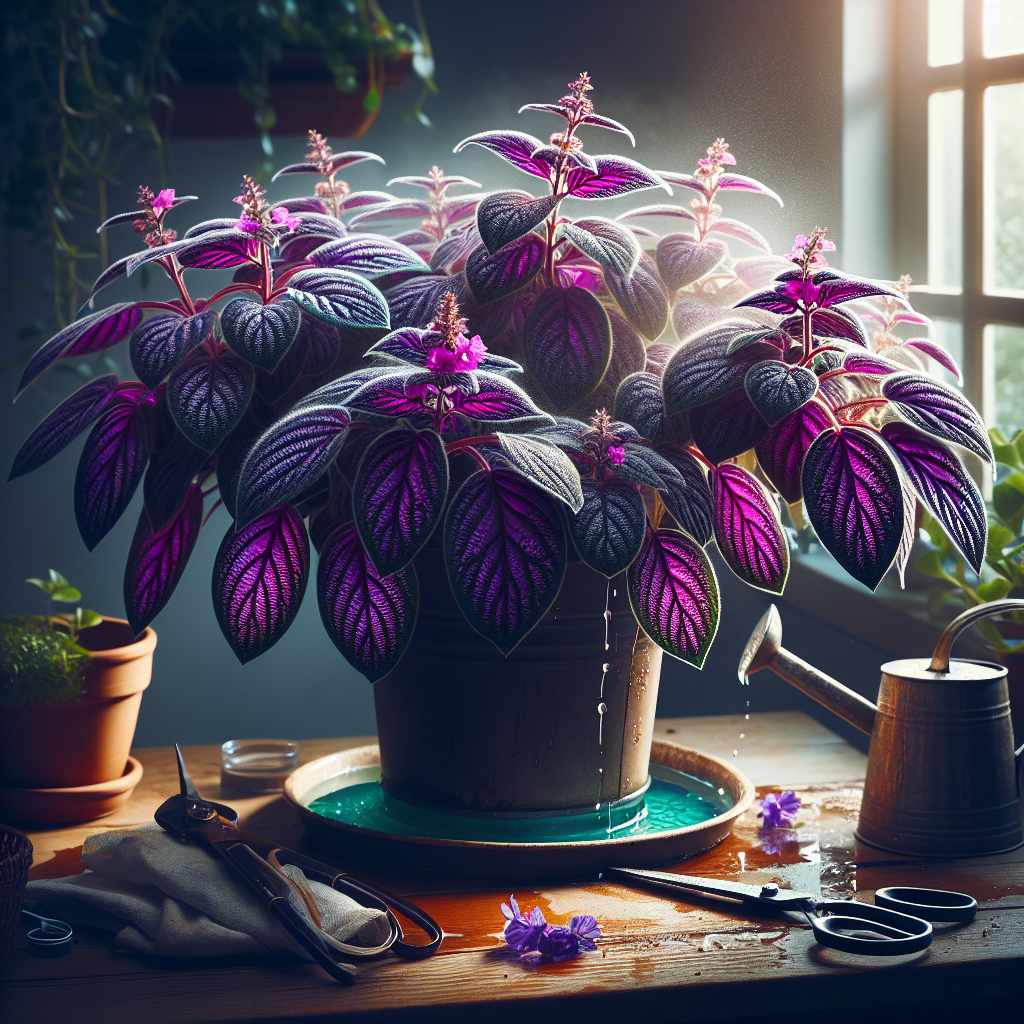Companion Planting Strategies in the Vegetable Garden
Updated May 28, 2024 at 7:00 pm

The Art of Companion Planting
Companion planting is a time-honored gardening technique that involves the strategic placement of certain plants close to one another to enhance growth, deter pests, and achieve better yields. This form of polyculture farming offers numerous benefits – it’s nature’s own method of creating a harmonious garden. Not only can companion planting help you manage space efficiently, but it also promotes biodiversity, leading to a more resilient garden ecosystem.
Understanding Companion Planting Basics
Before we dive into the specifics, let’s get a better understanding of why companion planting is effective. Each plant has its set of characteristics that can either positively or negatively affect its neighbors. This can involve attracting beneficial insects, repelling pests, providing shade, or even fixing nitrogen in the soil. Understanding these relationships is crucial for setting up a successful companion planting strategy in your vegetable garden.
-
Pet Friendly:
Companion planting is a pet-friendly approach to gardening. By using plants to ward off pests naturally, you reduce the need to use harmful chemicals that could potentially harm your pets.
Light Requirements:
Knowing the light requirements of your plants is essential as some companions may provide necessary shade for those that are sensitive to direct sunlight.
Watering:
The watering needs of plants can complement each other; for instance, shallow-rooted plants can benefit from the runoff provided by deeper-rooted companions.
Humidity:
Certain plant pairings can help stabilize humidity levels, often creating a more favorable microclimate for each other.
Temperature:
Companion plants can buffer temperature extremes, with larger plants sheltering smaller, more delicate ones from harsh conditions.
Difficulty:
The level of difficulty can decrease when practicing companion planting, as many plant-related issues like pests and diseases are naturally controlled.
Beneficial Companion Planting Pairings
Let’s explore some classic companion plant pairings that are known to work well together in the vegetable garden:
Tomatoes and Basil: Not only is this a classic combination on your plate, but basil is also said to improve the growth and flavor of tomato plants while repelling harmful pests like mosquitoes and flies.
Carrots and Onions: Onion family plants can repel carrot flies, and carrots can also help to loosen the soil, benefiting the root growth of onions.
Beans and Corn: Corn provides a natural trellis for beans to climb, while the beans fix nitrogen in the soil, benefiting the corn.
Marigolds: These bright flowers are more than just decorative; they’re a powerhouse in the companion planting world. Marigolds repel nematodes and other garden pests, making them excellent companions for a variety of vegetables.
Introducing Permaculture Principles
Embracing permaculture principles in your garden can take companion planting to the next level. This holistic approach to gardening considers the relationship between plants, the environment, and even the gardener’s lifestyle. For example, planting tall sunflowers to the west of a garden bed can provide the vital afternoon shade required by lettuces in hot climates.
Navigating Common Companion Planting Challenges
One of the challenges you might be facing is understanding which plants shouldn’t be paired together. Some plants, such as fennel and strawberries, can actively inhibit each other’s growth. It’s crucial to research carefully to prevent inadvertently creating competition or adversarial relationships in your garden beds.
Maximizing Space with Vertical Companion Planting
Vertical companion planting is an innovative solution for small spaces. By using structures such as trellises or stakes, you can grow vining plants like cucumbers alongside taller, straight plants like corn, maximizing your yield per square foot.
Pest Management with Companion Plants
Incorporating plants like nasturtiums and petunias, which attract predatory insects, can help you manage pests without resorting to harmful chemicals. These plants act as guardians for your garden, warding off unwanted pests and attracting beneficial bugs.
Complementary Watering Strategies
Understanding the water needs of your plants can also inform your companion planting strategy. Grouping plants with similar watering requirements together simplifies irrigation and helps to prevent overwatering or underwatering. For instance, pairing moisture-loving cucumbers with similarly thirsty squash can yield great results.
Encouraging Pollinators
Flowering companions such as borage and lavender are not only beautiful additions to your garden but also excellent for attracting pollinators. Bees and butterflies are essential for the pollination of many vegetable plants, which can lead to a more fruitful garden.
Herb Companion Planting
Herbs can be some of the best companions in the garden. Not only do they repel pests, but they can also improve the flavor and health of vegetables. For instance, rosemary repels carrot flies and can be planted near carrots and beans to protect them.
Companion Planting Resources
Books like “Carrots Love Tomatoes” by Louise Riotte or “The Vegetable Gardener’s Bible” by Edward C. Smith are great resources. These texts delve into the specifics of companion planting, backed by years of research and experience.
DIY Companion Planting Charts
Creating your own companion planting chart can be a fun and educational project. It’s a visual guide that you can refer to when planning your garden, ensuring that you pair up plants to their best advantage.
Evaluating Your Soil
Soil testing kits can be invaluable in understanding the needs of your garden. By knowing the pH and nutrient levels of your soil, you can pair plants that will complement each other’s soil requirements.
Soil Amendments and Companion Planting
Sometimes, the difference between a flourishing garden and a struggling one lies in the soil health. Integrating organic soil amendments like compost or well-rotted manure can provide the necessary nutrients and improve soil structure. When you combine this with companion planting, you create an environment where plants can thrive together. For instance, nitrogen-rich soil amendments can be particularly beneficial when planting nitrogen-loving plants like leafy greens next to nitrogen-fixing legumes such as peas.
Seasonal Companion Planting Considerations
An often overlooked aspect of companion planting is the importance of considering the seasons. Cool-season crops like spinach and lettuce can benefit from being planted next to tall summer crops like tomatoes and corn, which will eventually provide necessary shade as the seasons transition. Don’t forget to plan for crop rotation, which is an integral part of maintaining soil health and balancing nutrients when using companion planting strategies season after season.
Organic Pest Control Solutions
While companion planting does a great deal in managing pests, sometimes additional organic pest control solutions are needed. Neem oil and diatomaceous earth are excellent organic options that can protect your garden without harmful chemicals. They’re especially useful for instances when companion plants need a little extra help fending off persistent pests.
Smart Watering Systems
To really optimize your companion planting, consider installing smart watering systems, such as drip irrigation or soaker hoses. These not only save water by directing it precisely where it’s needed but can also be tailored to the needs of different plant pairings. For instance, deep-rooted plants may require less frequent but deeper watering, which can be programmed into a smart system, sparing you from the guesswork and ensuring your companions get just the right amount of moisture.
Companion Planting for Disease Prevention
Beyond pest management, companion planting can also help prevent plant diseases. By increasing biodiversity and avoiding monoculture, you reduce the risk of disease spread. For example, staggering plants with strong-smelling herbs can mask the scent of more disease-prone plants, confusing pathogens and preventing them from taking hold.
Utilizing Native Plant Companions
Leveraging native plants within your companion planting strategy can provide untold benefits. These plants are already adapted to local conditions and can support local wildlife, including pollinators and beneficial insects. Including native plants like wildflowers can add beauty while stabilizing your garden ecosystem.
The Importance of Crop Rotation
Crop rotation goes hand in hand with companion planting, as it prevents soil depletion and disrupts the life cycles of pests and diseases. By rotating crops through different sections of your garden each year, you ensure that the same garden plots are not used for the same plant families repeatedly, maintaining soil fertility and garden health.
Companion Planting and Sustainable Gardening
Companion planting is not only about the immediate benefits but also plays a significant role in sustainable gardening practices. It allows for a reduction in the use of synthetic fertilizers and pesticides, promotes biodiversity, and enhances the soil’s organic matter. This, in turn, promotes a sustainable environment where both plants and wildlife can flourish.
Attracting Beneficial Wildlife
Your garden’s health isn’t solely dependent on the plants you choose but also on the wildlife they attract. Companion planting can attract beneficial wildlife such as birds and bats, which serve as natural pest controllers. For instance, planting sunflowers can draw birds that feed on troublesome insects, providing natural pest control and pollination services.
Prioritizing Plant Health
No companion planting guide would be complete without emphasizing plant health. Strong, healthy plants are more capable of resisting pests and diseases, and they often begin with the choice of quality seeds or seedlings. Make sure to select disease-resistant varieties and robust plants to ensure the success of your garden.
Finding the Right Plant Combinations
The key to successful companion planting lies in finding the right plant combinations that offer mutual benefits. This might mean consulting with local gardeners, agronomists, or even joining gardening forums and communities. Sharing experiences can help you discover combinations that you might not have considered before and that are particularly well-suited to your local environment.
Creating a Balanced Ecosystem
A balanced ecosystem is the end goal of companion planting. You’re looking to create a self-sustaining environment where each element supports the others. Companion planting is more than just the physical proximity of plants; it’s about understanding and fostering the relationships between different species and the garden environment.
Monitoring and Adjusting Your Approach
Successful gardeners know that observation is key. Monitor your companion planted beds closely, take notes, and be ready to adjust your strategy as needed. What works one year might not work the next, or what works for one gardener might not work for you. Constant learning and adapting are part of the companion planting journey.
Expanding Beyond Vegetables
While we’ve focused on vegetable gardens, companion planting can be applied to fruit orchards, herb gardens, and even ornamental landscapes. Consider the broader applications of companion planting principles and how they could benefit all aspects of your gardening endeavors.
Garden Planning Tools and Technology
In the modern age, garden planning has become much more manageable with the emergence of tools and technology designed specifically for gardeners. Take advantage of garden planning apps and software that offer companion planting features; these can help you visualize your garden layout before you even break ground. Such tools often come with databases of plants detailing their companion or antagonist relationships which could save you a lot of trial and error.
Season Extension Techniques for Companion Planting
Companion planting doesn’t have to be limited by the traditional growing season. With the use of cold frames, greenhouses, or even simple row covers, you can extend the growing seasons of your plants. This means that companions that would otherwise not thrive together due to different growing seasons can now be cultivated side by side. Season extension can allow for continuous harvests and even more diverse planting options.
Incorporating Edible Flowers and Ornamentals
Who says that vegetable gardens have to be all about the veggies? Incorporating edible flowers and ornamental plants into your companion planting strategy can bring both aesthetic appeal and functionality. Flowers such as calendula and nasturtiums can deter unwanted pests while adding a pop of color and variety to your cuisine. Similarly, ornamental borders of lavender or rosemary can act as pest repellents while giving the garden structure.
Community Gardens and Cooperative Companion Planting
For those who lack the space for a large vegetable garden, community gardens offer a fantastic way to practice companion planting. Collaborating with other gardeners can provide a wider array of companion planting possibilities and also the chance to learn from one another’s experiences. Cooperative gardening efforts often lead to a richer, more diverse harvest for everyone involved.
Staying Organic and Eco-Friendly
Maintaining an organic garden goes hand in hand with companion planting strategies. Always consider organic seeds, natural fertilizers, and pest control methods to keep your garden as eco-friendly as possible. The use of organic methods further supports the natural processes that make companion planting so beneficial to the vegetable garden.
Conclusion
Companion planting in the vegetable garden is a rich and varied practice that can yield incredible benefits for both novice and experienced gardeners alike. From the basics of understanding plant relationships to the use of advanced tools and community resources, the strategies outlined in this article aim to provide a comprehensive guide to making the most of your gardening space. Remember that companion planting is both an art and a science – it requires patience, observation, and a willingness to learn and adapt. Whether you’re hoping to attract beneficial insects, improve plant health, or simply create a more productive and sustainable garden, the principles of companion planting can help you achieve your gardening goals. Keep experimenting with different plant combinations and enjoy the process of nurturing a thriving, companion-planted garden that’s eco-friendly and bursting with life.
Shop more on Amazon

